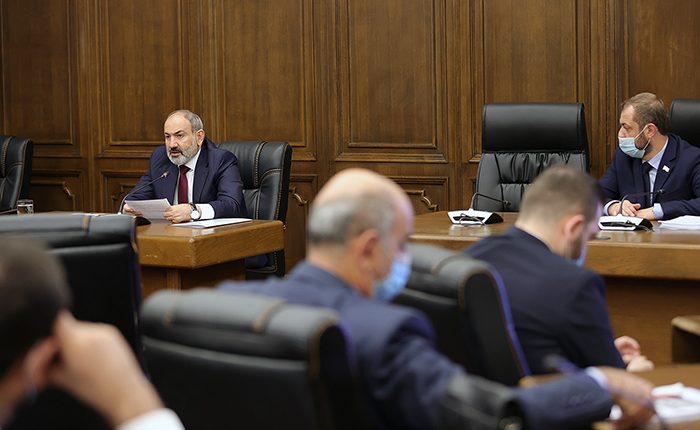YEREVAN — Prime Minister Nikol Pashinian said on Monday that his government expects the Armenian economy to continue its recovery from a coronavirus-related recession and grow by 7 percent next year.
“Despite the fact that the most part of the past year was marred by an unstable political environment, our economy exceeds all the growth forecasts for 2021. Furthermore, the government hopes for more based on the results of the past year,” Pashinyan said at the discussion of the draft budget for FY 2022 at the joint sitting of the Standing Committees of the National Assembly
“I am pleased to note that in September 2021, an absolute record number of 651,141 paid jobs was registered in the Republic of Armenia. We have never had a higher index in Armenia. The previous maximum of 631 966 jobs was registered in September 2020. This year’s figure is 3% higher than last year,” PM Pashinyan said.
“Against the background of the rather high inflation of 6.4% this year, it can be emphasized that in September the gross salary fund increased by 15.3% or 19 billion 308 million drams as compared to September of the previous year, and the salary of one employee increased by 11.9% or 23 782 AMD as compared to September of the previous year. Exports have increased significantly by more than 20%, not only the export of mining resources, but also manufactured and agricultural products. The volume of construction has increased by 7% this year, the growth of services as of September was more than 5%. These factors make the 7% economic growth target realistic,” PM Pashinyan stated.
“According to the draft, the budget revenues for 2022 are expected to amount to 1 trillion 946 billion drams, which is 17% more than in 2021 and 25% more than in 2020. Expenditures are expected to amount to 2 trillion 190 billion drams, which is 10% more than in 2021 and 16% more than in 2020. Capital expenditures in 2022 will amount to 347 billion drams, which is 55% more than in 2021 and 53% more than in 2020,” he said.
The Prime Minister said the state budget for 2022 is based on three priorities: reform and improvement of the security system, development of infrastructure, modernization of education and science.
The economy shrunk by 7.6 percent last year due to negative effects of the coronavirus pandemic compounded by Armenia’s war with Azerbaijan. It returned to growth this spring and is now projected to expand by at least 6 percent in 2021.
Both the World Bank and the International Monetary Fund anticipate slower growth in 2022. The bank forecast a 4.8 percent growth rate for the South Caucasus nation in a report released earlier this month.
A senior IMF official similarly predicted last month that Armenian growth will slow down to 4.5 percent in 2022. “Downside risks remain elevated, including from geopolitical tensions, a slowdown in external demand, and heightened global financial market volatility,” he said.










